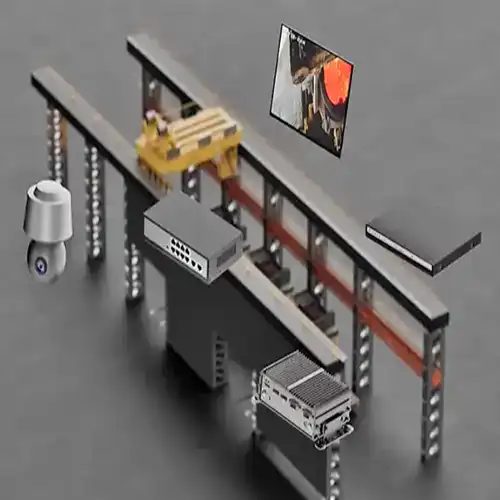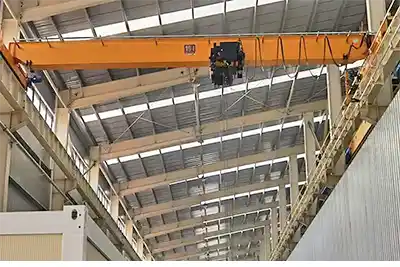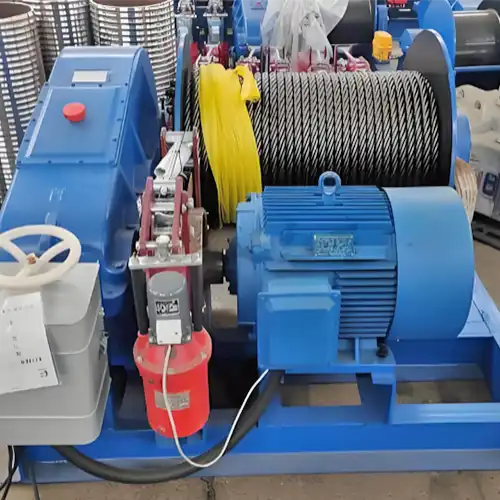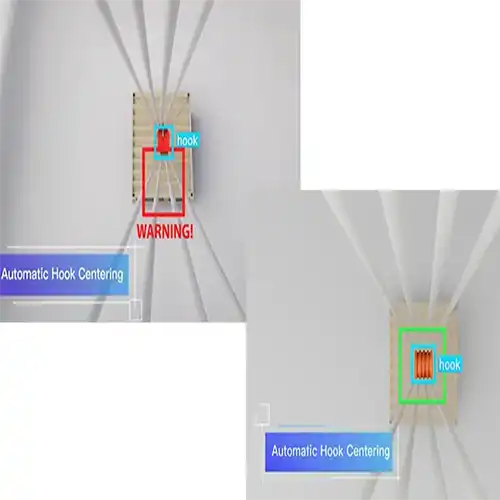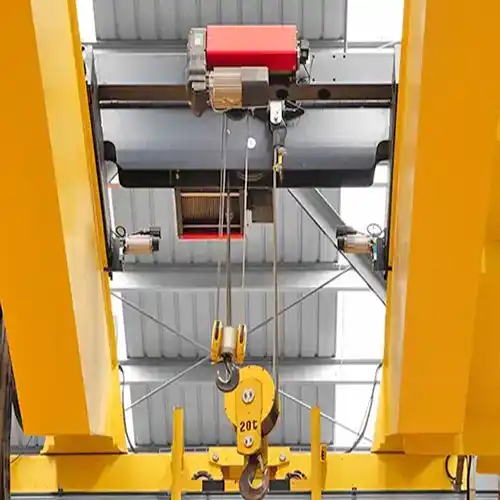How to Upgrade Old Overhead Cranes Cost-Effectively?
Learn practical steps to modernize aging overhead cranes using advanced or Chinese overhead crane parts, improving performance &reducing cost efficiently.
Category: Featured
Your Trusted Overhead Crane Manufacturer & Supplier
How to Upgrade Old Overhead Cranes Cost-Effectively
How to Upgrade Old Overhead Cranes with Advanced or Chinese Parts for Cost-Effective Modernization
Introduction: Why Many Workshops Still Run Old Overhead Cranes
Walk into many older factories or steel plants, and chances are you'll still see overhead cranes that have been in service for 20, 30—even 40 years. These might be heavy-duty Russian-made cranes, legacy European brands, or older locally manufactured models. As long as the steel structure remains sound and the crane still "does the job," many operators prefer to keep using them rather than replace the entire system.
That makes sense, especially when the production layout hasn't changed and the budget is tight. But there's a catch.
Common Problems with Aging Overhead Cranes
While these cranes may still move loads, age eventually shows—in both performance and maintenance costs. You might be noticing some of the following:
- Inefficient motor systems that consume more energy than newer models
- Frequent breakdowns due to worn mechanical parts or outdated wiring
- Lack of spare parts, especially for old Soviet or European cranes where the original manufacturers no longer exist
- Obsolete control systems that don't meet today's safety standards
- Slower lifting speeds or jerky movements that reduce productivity
For many factories, it becomes a balancing act: How much longer can the crane operate without causing serious downtime?
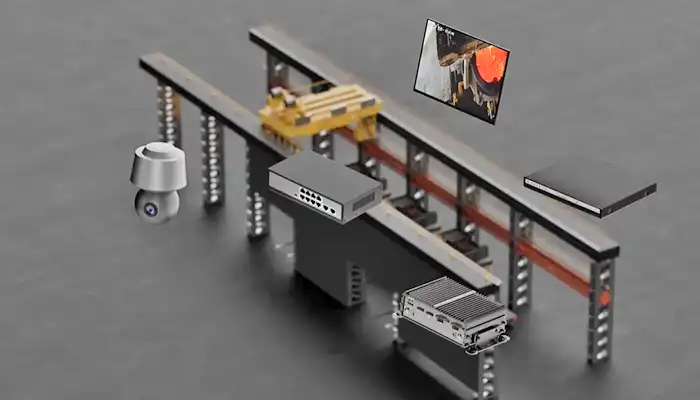
A Smarter Way Forward: Upgrading Instead of Replacing
Here's the good news—completely replacing your crane isn't always the only option. In many cases, you can extend the life of an old overhead crane by upgrading key components. Swapping out old hoists, motors, or control panels with new parts—especially cost-effective Chinese components—can restore reliability and boost efficiency without the price tag of a full new crane.
- Upgrades can be done in stages, focusing on the most critical parts first
- Chinese replacement parts are widely available, affordable, and compatible with many older crane systems
- Minimal disruption to production if planned properly
- Allows you to adapt the crane to current production needs without a major overhaul
Not all overhead bridge cranes can be upgraded—especially if major specs or drawings are missing. But for many operations, it's a practical solution that adds another 10–15 years to the life of their crane, with far less financial strain. If you have any need on overhead crane refurbishment, please feel free to contact us by contact + 86 151 3871 1597 by phone or WhatsApp.
When Should You Consider Upgrading an Old Overhead Crane?
Hello and welcome — if you're working with an older overhead crane in your facility, you're definitely not alone. Many factories and plants still rely on aging industrial cranes to get the job done. But over time, even the toughest machines start showing signs of wear, and that's when upgrading becomes a practical move. Here are some situations where it might be time to consider modernizing your overhead bridge crane or bridge crane:
Frequent Breakdowns or High Maintenance Costs
If your overhead crane is constantly breaking down, it's more than just an inconvenience.
- Repairs are becoming more frequent and expensive
- Spare parts, especially for older Russian or European cranes, are difficult or impossible to find
- Your maintenance team spends more time fixing than operating
Outdated Electrical Systems or Controls
Many old bridge cranes use outdated technology that no longer meets today's efficiency or safety standards.
- Electrical panels are often limited and prone to failure
- Relay-based controls are hard to troubleshoot
- No support for remote or semi-automated operation
Reduced Productivity Due to Downtime
Unreliable industrial cranes can slow down your entire workflow.
- Slow or inconsistent lifting speeds reduce efficiency
- Repeated downtime disrupts production schedules
- Operators often have to work around limitations just to keep things moving
Lack of Spare Parts or Technical Documentation
This is especially common with legacy overhead bridge cranes.
- No available drawings or technical specifications
- OEMs no longer in business, or parts discontinued
- Risk of using incompatible parts increases maintenance uncertainty
Evolving Production Needs
Your lifting needs today may not be the same as they were 10 or 20 years ago.
- Handling heavier or more frequent loads
- Needing smoother and faster lifting operations
- Upgrading components like the hoist, control system, or end trucks can help your crane keep up
If you're seeing any of these issues with your overhead crane system, an upgrade might be the right move. Modern components—including reliable, affordable Chinese-made parts—can help extend your crane's life and performance without the cost of full replacement.
Key Areas That Can Be Upgraded or Replaced
Upgrading an old overhead crane doesn't always mean replacing the entire system. In many cases, specific components can be modernized to improve performance, reduce downtime, and meet current safety standards. Let's take a closer look at the main areas of an overhead bridge crane or industrial crane that can be upgraded or replaced.
Electrical and Control System
Old electrical systems are often unreliable and inefficient. Upgrading this part of your bridge crane can dramatically improve operation and safety.
- Replace outdated control panels with PLC-based systems or crane automation for better precision and flexibility
- Add inverter drives (VFDs) to improve lifting smoothness, energy efficiency, and reduce mechanical stress
- Install remote controls or updated pendant stations for safer and more convenient operation from the ground
These upgrades allow your overhead crane to run more smoothly and help reduce power usage over time.
Lifting Mechanism (Hoist and Trolley)
The hoist is the heart of any industrial crane. If it's outdated or underperforming, it can become a bottleneck in your workflow.
- Replace old hoists with modern wire rope or chain hoists that offer more reliable lifting and better control
- Use Chinese-made electric hoists that are cost-effective, widely available, and built to match or exceed the lifting parameters of your original setup
Choosing the right hoist upgrade ensures your overhead bridge crane continues to handle loads safely and efficiently.
End Carriages and Drive Systems
Traveling mechanisms are often among the first components to wear down over time. Replacing or upgrading these can restore smooth crane movement and reduce vibration or misalignment issues.
- Upgrade long travel and cross travel motors and gearboxes with modern, energy-efficient models
- Consider modular end trucks that are easier to install and can adapt to your existing crane runway or structure
These updates extend the life of your bridge crane and improve its overall stability during operation.
Safety Devices
Safety upgrades are not just a good idea—they're often required by today's standards. Many older cranes lack the safety features expected in modern industrial settings.
- Add or replace limit switches to prevent over-travel in hoisting or trolley motion
- Install anti-collision systems to avoid crane-to-crane impacts
- Add load indicators to monitor lifting weight in real-time
- Include an emergency stop system for quick response during equipment failure or danger
Even small upgrades in these key areas can make a big difference in reliability, performance, and workplace safety. For facilities working with limited budgets, upgrading with high-quality Chinese components offers a smart way to renew the life of their overhead crane without replacing the entire system.
Challenges in Upgrading Old Cranes Without Technical Drawings
Upgrading an old overhead crane without original technical documentation can be tricky. It's a situation many factories and maintenance teams find themselves in, especially when dealing with old Russian or European industrial cranes that have been in operation for decades.
While upgrades are often cheaper than full replacements, working without clear specifications introduces real risks—and sometimes, full replacement of key parts actually turns out to be the better, more cost-effective solution.
Common Obstacles Without Original Drawings
When original crane drawings or technical specs are missing, you lose access to basic but essential details such as:
- Crane capacity (in tons)
- Span (distance between runway beams)
- Lifting height (required hook travel)
- Traveling length and working area
- Voltage, frequency, and power phase details
Without these, selecting compatible parts becomes difficult and risky. Every new component must be measured, adapted, and sometimes custom-machined to fit.
Compatibility and Mechanical Mismatch
Older overhead bridge cranes, especially European or Soviet-era designs, often have unique structural profiles, mounting interfaces, or gear ratios that don't align with modern Chinese parts. This leads to:
- Difficult or impossible part replacement without major modifications
- Unexpected wear or alignment issues
- Safety concerns from mismatched speed, torque, or load capacity
Why Complete Replacement of Key Systems Often Makes More Sense
Instead of sourcing individual replacement parts one by one—and hoping they all work together—it's often more practical to replace the entire hoist, drive system, or electrical panel as a package.
Key Benefits of Full System Replacement:
- Saves Time: No need for repeated measurements, trial fittings, or adjusting mismatched parts. A complete system is ready to install.
- Ensures Compatibility: Components are pre-matched to work together smoothly, avoiding control issues or mechanical conflicts.
- Extends Crane Lifespan: A new hoist or control system can add 10–15 more years of safe, reliable use to your existing overhead crane structure.
- Cost-Effective Compared to Piecemeal Upgrades: Sourcing and adapting parts one at a time can become more expensive than purchasing a complete solution—especially when factoring in downtime, freight, and modification costs.
- Lower Installation and Maintenance Labor: Installing a pre-matched hoist or drive kit is quicker and simpler. In the long run, fewer breakdowns mean lower maintenance costs and less technician time on-site.
Tip: When Original Info Is Missing, Consider a Turnkey Replacement Option
If you're facing missing drawings and unknown specifications, a turnkey replacement of key parts like the hoist, trolley, and control system might be your safest and most efficient route. With the right measurements and technical input, a modern Chinese hoist package can be adapted to your existing bridge crane frame—saving time, reducing installation complexity, and lowering your long-term operating costs.
In summary, while it's tempting to replace only what's broken, a complete system upgrade often gives better value, improved reliability, and faster ROI—especially when the old crane lacks documentation. Think of it as giving your crane a second life, but with modern performance and fewer headaches.
Why Choose Chinese Parts for Overhead Crane Modernization?
When it comes to modernizing old industrial cranes, especially overhead bridge cranes that are decades old, one of the smartest moves many factories are making is using Chinese-made parts. Whether you're replacing the hoist, motor, control panel, or the entire drive system, Chinese components offer a practical, affordable, and proven solution.
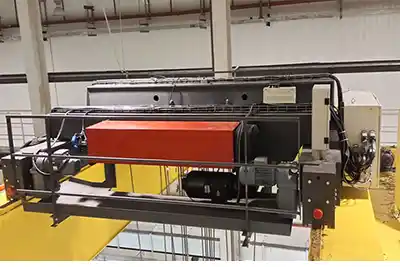
Advacned double girder overhead crane from China with smart crane featrues
Here's why choosing Chinese parts can help extend the life of your overhead crane without breaking the bank:
Key Advantages of Using Chinese Components
- Cost-Effective and Readily Available
Chinese crane parts typically cost much less than European or OEM-branded components. This helps you keep upgrade budgets under control, especially for older cranes with limited resale value. In most cases, these parts are also in stock or available on short lead times, which reduces downtime. - Wide Range of Standardized Components
Whether you're upgrading a 5-ton hoist or a 50-ton double girder system, Chinese suppliers offer a broad selection of standardized parts. From wire rope hoists and motors to limit switches and gearboxes, you'll find components that match nearly any lifting capacity and duty class. - Designed for Modular Integration
Many modern Chinese crane components follow modular design standards, making them easier to adapt into existing bridge crane systems. This is especially helpful when working with older equipment, as it reduces the amount of customization and fabrication needed on-site. - Proven Performance with Certifications
Reputable Chinese manufacturers provide CE, ISO, and other international certifications for their products. These aren't cheap imitations—they're high-performance parts that are widely used in steel plants, manufacturing workshops, and warehouses around the world. - Simplified Global Logistics and After-Sales Support
With established export channels and experienced engineering support teams, sourcing Chinese parts has become much easier. Most suppliers provide installation guides, wiring diagrams, and technical assistance in English or local languages. - Lower Installation and Labor Costs
Because Chinese crane systems are often designed with user-friendly interfaces and simple assembly, installation and commissioning are quicker and cheaper. Less time on-site means less disruption to your operations—and fewer technician hours to pay for.
Compatibility with Old Equipment Isn't Always Perfect
Legacy Russian or European cranes may use unique mechanical interfaces, electrical configurations, or custom-built frames. This means:
- Direct part-for-part replacement is often difficult without detailed measurements
- Electrical connections or control system wiring may not match modern standards
- Mechanical mounting points, bolt patterns, or steel profiles might require adjustments
The good news: Having specific parameters or technical drawings can make a big difference. When you provide detailed crane specifications such as lifting capacity, span, lifting height, motor specs, and wiring diagrams, manufacturers can:
- Customize or adapt parts to fit your crane frame accurately
- Ensure that electrical components are compatible with your power supply and control system
- Reduce onsite modifications and installation time
If original documentation isn't available, a thorough site survey and measurement can help recreate necessary data, allowing suppliers to propose suitable upgrade solutions.
Full Replacement Is Often the Smarter Choice
When upgrading an old overhead crane, it might be tempting to replace just the worn-out parts one by one. However, in many cases, replacing entire functional systems—like the hoist and trolley assembly or the full control panel—proves to be a much better approach.
This method offers several clear advantages:
- Better Compatibility: New components designed to work together reduce the risk of mismatched parts causing issues down the line.
- Simplified Installation: Installing a complete system is often faster and less complicated than piecing together individual parts, which might require extra fitting or modifications.
- Improved Reliability: Full replacements often come with updated technology and better quality controls, meaning fewer breakdowns and longer service life.
- Easier Maintenance: Modern systems typically have better documentation and support, making future upkeep simpler and less costly.
Overall, choosing to replace entire systems rather than individual parts can save you time, reduce headaches, and offer better value in the long run.
In short, upgrading with Chinese-made parts offers a practical, affordable path to renew the performance of your aging overhead crane. Just make sure the key dimensions and specs are clear, and consider full replacement kits over one-off components to get the best results. With the right info and a reliable supplier, compatibility challenges can be managed effectively—giving your overhead bridge crane a new lease on life.
Cost-Effective Modernization vs. Full Replacement
When deciding how to handle aging overhead cranes, many companies weigh the benefits of upgrading with new parts versus investing in a full crane replacement. Both approaches have their pros and cons, and the right choice depends on your specific needs, budget, and operational goals.
Here's a simple comparison to help you understand the key differences between upgrading with Chinese parts and opting for a complete crane replacement:
| Criteria | Upgrade with Chinese Parts |
Full Crane Replacement |
|---|---|---|
| Cost | Generally lower upfront cost |
Higher initial investment |
| Downtime | Shorter downtime, faster installation |
Longer downtime due to new installation |
| Customization | Limited to available parameters |
Fully customized to your needs |
| Risk | Medium risk if specs unknown |
Lower risk with new equipment and docs |
| ROI | Faster ROI through lower cost and speed |
Longer-term ROI with new tech |
Choosing the Right Option
- Upgrading with Chinese Parts is ideal if you want to extend the life of your current overhead bridge crane quickly and cost-effectively. It's best when your crane's basic specs are known and compatible with standard parts.
- Full Crane Replacement makes sense when your existing crane is outdated beyond repair, specs are missing, or your production needs have changed significantly. This option offers a brand-new system built to your exact needs, with modern safety and efficiency features.
Both choices can improve your operations, but careful evaluation of costs, downtime, and long-term goals will help you decide the best path forward.
When an Upgrade Is Not Feasible
Sometimes, upgrading an old overhead crane just isn't a practical option. Certain conditions make it difficult—or even unsafe—to try to modernize existing equipment. Here are the main reasons why an upgrade might not be the best choice:
Missing Main Crane Specifications
If you don't have clear data on critical factors like:
- Capacity (how much weight the crane can lift)
- Span (distance between runway beams)
- Lifting height (maximum hook travel)
- Voltage and power supply details
Without these specs, selecting compatible replacement parts or designing upgrades becomes a guessing game, which is risky.
No Available Drawings for Mechanical or Electrical Parts
Original technical drawings and wiring diagrams are essential for understanding the crane's design and ensuring safe upgrades. If these are lost or unavailable, it's hard to guarantee that new components will fit or function properly.
Structural Wear Beyond Repair
Overhead cranes operate under heavy loads and constant stress. If the steel structure, runway beams, or key components have suffered extensive wear, corrosion, or damage, simply upgrading parts won't address the core safety issues.
Conclusion: Replacement May Be More Efficient and Safer
When these issues come into play, fully replacing the overhead crane—or at least the major systems—is often the safer and more cost-effective route. This approach ensures your operation complies with safety standards and minimizes future downtime, while providing modern performance and reliability.
Investing in a new overhead bridge crane may involve higher upfront costs, but it often pays off with lower maintenance, improved safety, and longer service life.
Steps to Start Your Crane Upgrade Project
Upgrading an overhead crane can seem overwhelming at first, but breaking it down into clear steps makes the process much easier and smoother. Here's a practical guide to get your crane modernization project started on the right foot:
Inspect and Document Existing Crane Parameters
Begin with a thorough inspection of your current crane system. Key details to note include:
- Lifting capacity
- Crane span and runway length
- Lifting height
- Electrical specifications (voltage, phase, frequency)
- Condition of hoists, motors, controls, and structural components
Taking photos and videos can also help communicate the condition clearly to suppliers.
Identify Components Needing Replacement
Determine which parts are worn out, obsolete, or causing operational issues. Common candidates include:
- Hoists and trolleys
- Control panels and wiring
- Motors and drives
- Safety devices such as limit switches or load indicators
Contact a Trusted Supplier with Your Details
Share your inspection data and specific requirements with a reputable crane parts supplier or manufacturer. Reliable suppliers can help you understand what parts or systems are available and suitable for your crane model.
Request a Proposal for Chinese or Advanced Replacement Parts
Ask the supplier for a detailed quotation, including lead times, compatibility information, and technical support. Chinese-made components often provide a good balance of cost and quality.
Plan for Downtime and Installation
Coordinate with your operations and maintenance teams to schedule the upgrade during planned downtime or low production periods. Proper planning ensures minimal disruption and smoother installation.
Following these steps will help you avoid surprises, ensure compatibility, and get the best value for your overhead crane upgrade project.
Final Thoughts
Upgrading aged overhead cranes is a smart and practical investment for many facilities looking to extend equipment life without the cost of full replacement.
With the right parts and trusted partners, you can significantly improve your crane's safety, efficiency, and operational lifespan.
However, when original drawings or specifications are missing, it's wise to seek professional consultation or consider a full system replacement to avoid compatibility and safety risks.
Need help upgrading your old overhead crane?We provide customized modernization solutions using high-quality Chinese parts tailored to your needs.Simply send us the available crane information, and our experts will help you evaluate the best options to get your crane running smoothly again.
Related Products
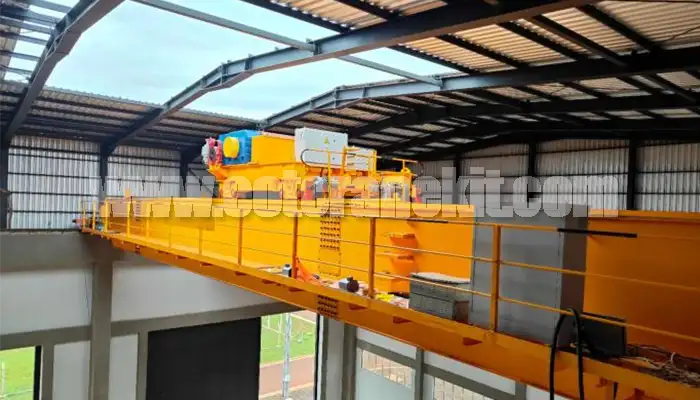
Latest project
150 Ton Overhead Crane Installation Feedback – Paraguay Case
QDX 150 ton overhead crane in action in Paraguay. Installation photos, video, and client feedback show performance, safety, and heavy-lifting efficiency.
Free consultation to Confirm Parameters & Specifications and Get
Latest Crane Price & Crane Rate.
- Types of overhead cranes : _______?
- Optional: Overhead travelling crane, goliath gantry crane,Slewing jib crane, Single girder or double girder crane,small portable crane or kbk crane, etc.
- Capacity of overhead crane: _______?
- Optional: 0.25ton, 0.5 ton, 1 ton, 2 ton, 3ton, 5 ton, 10 ton,15ton, 20ton, 25 ton, 30ton,35ton, up to 550ton, etc.
- Crane span & lifting height : _______?
- Crane travelling length : _____?
- Control of overhead crane:_______?
- Optional: pendant/ remote/cabin control
- Voltage supply of overhead crane:_____?
- Eg,: 380V50/60HZ,3Phase or others,etc.
- Application/usage of crane:_______?
- Eg,: Steel mill, ,injection mold, cement,stone, concrete,granite, general manufacturing, etc.
Just leave a message via the contact form and our hoist and crane engineer will contact you with in 24working hours.
Get In Touch
